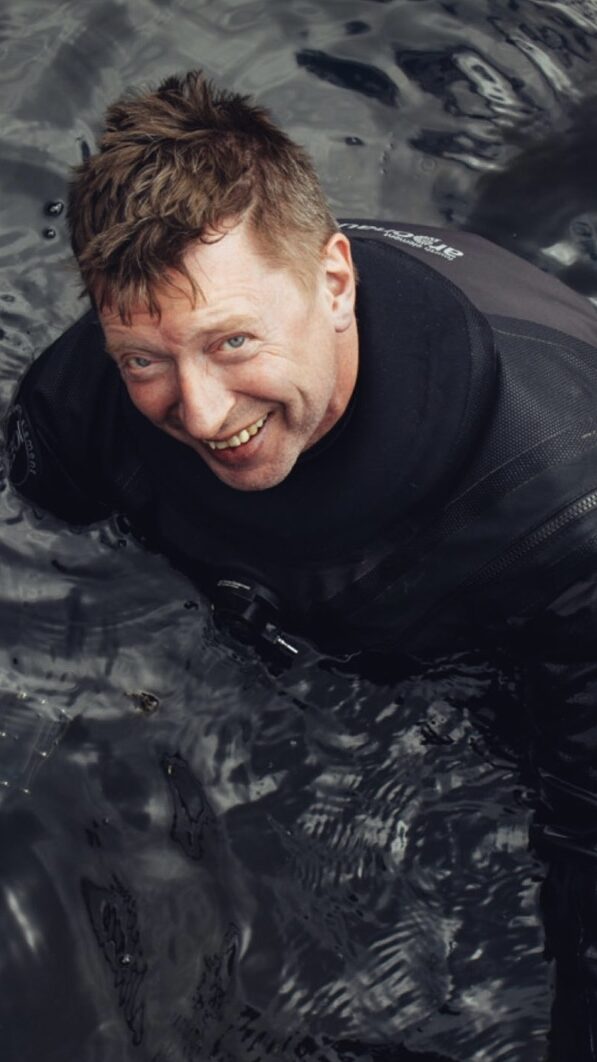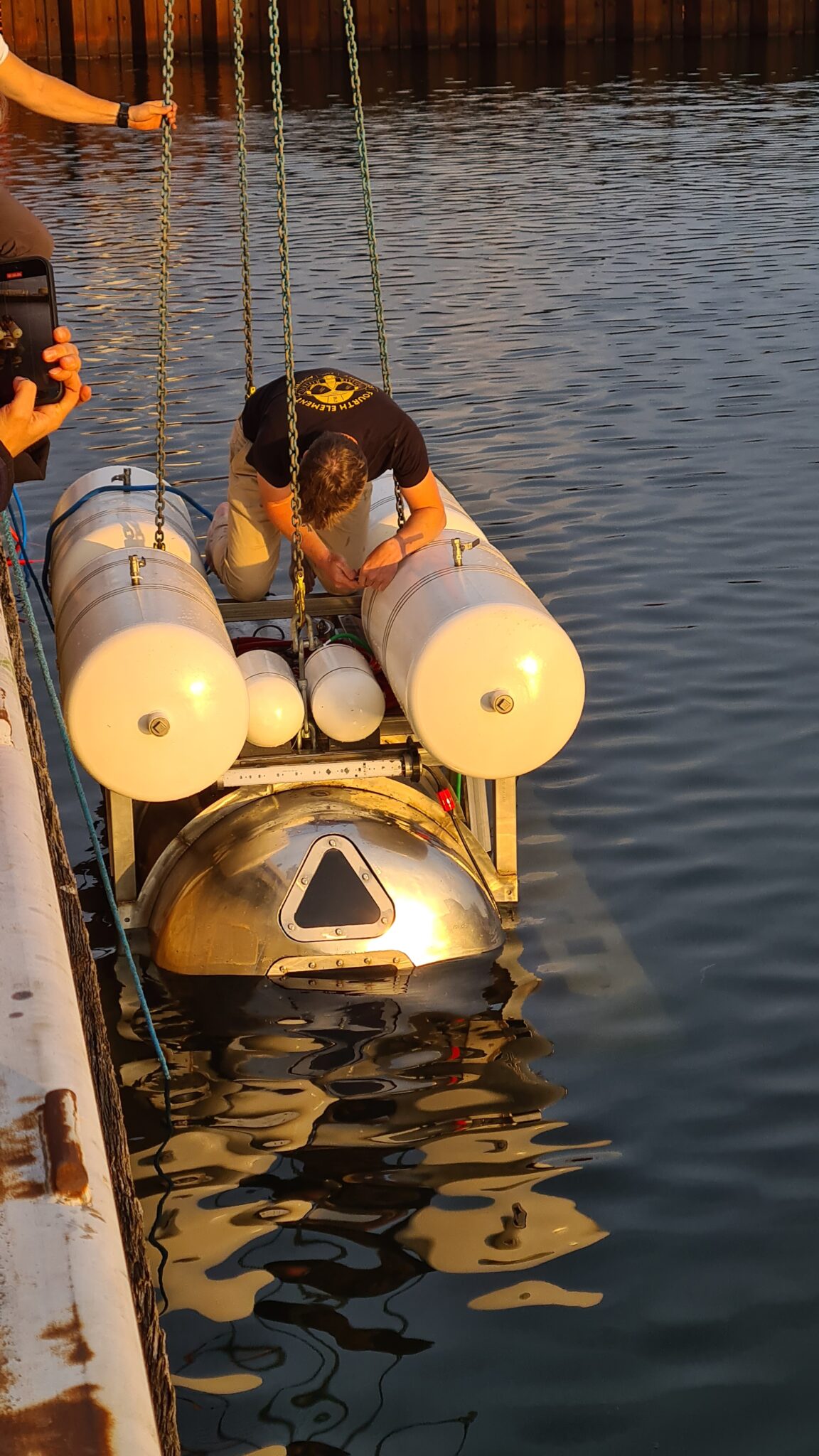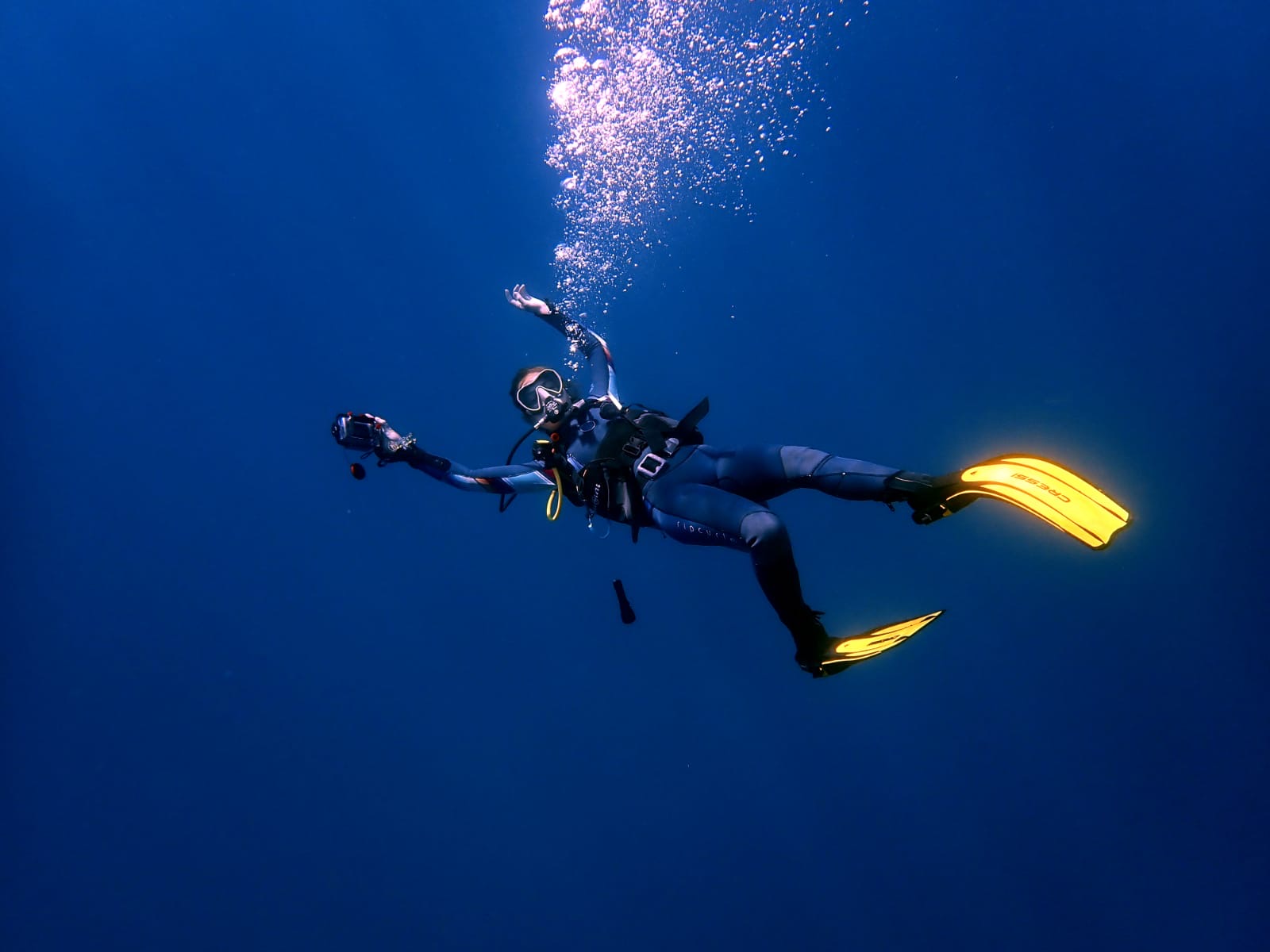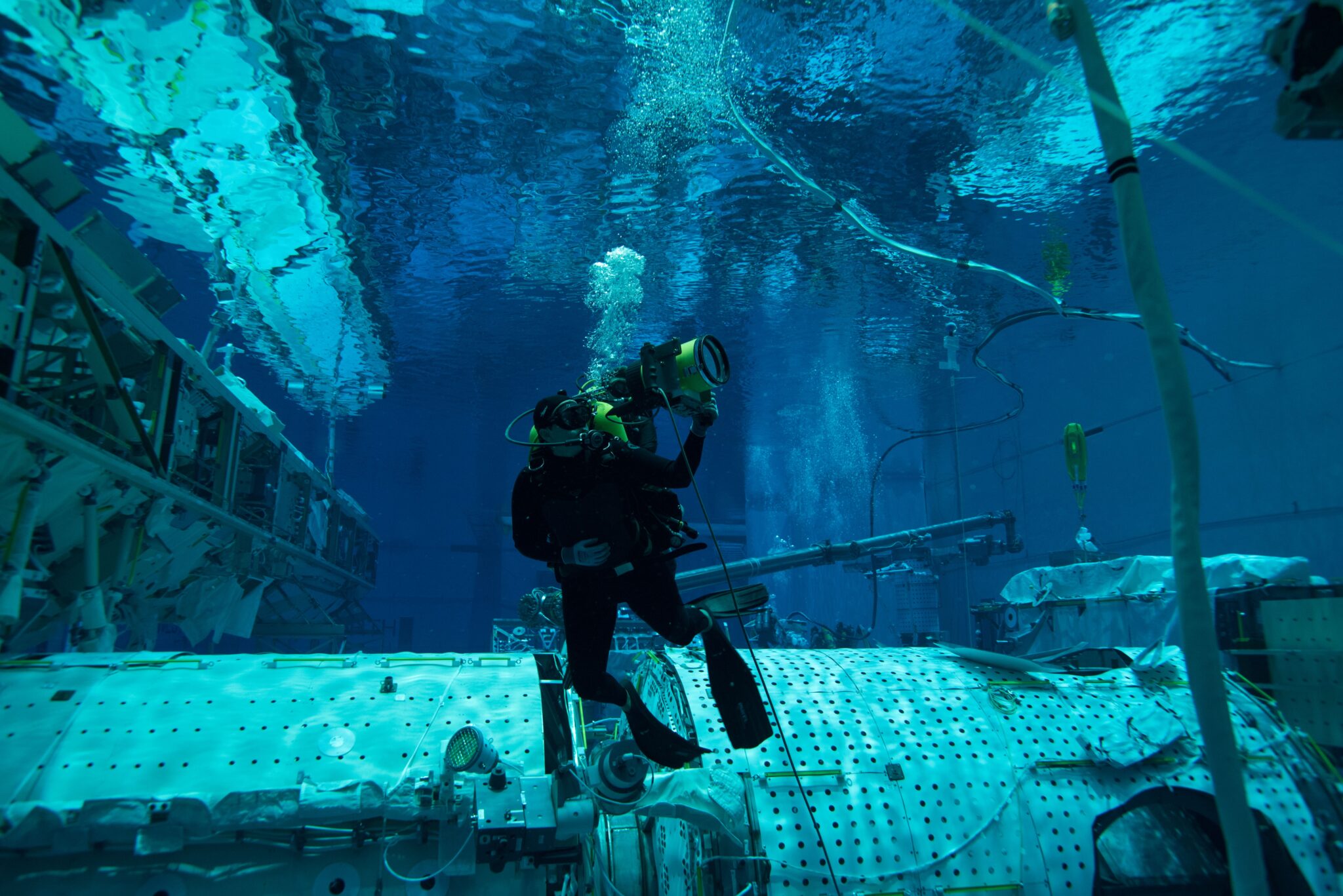Space and scuba diving may seem like worlds apart. In reality, scuba diving offers the perfect platform for training for life in space. Both challenge human endurance, take place in hostile environments and push technological boundaries. PADI Professionals are combining their scuba diving skills with advancing humanity’s exploration of the final frontier. Here’s exactly how scuba divers are having an impact on space exploration and the space industry.
Morten Steen, a PADI Instructor and the Safety Advisor for SAGA, an internationally acclaimed start-up based in Copenhagen that works on space architecture, is excited about the future of PADI Pros in advancing space exploration. “You have to think fast in these hostile environments. That’s the main similarity between scuba diving and space. You prepare for what can happen. You prepare for crisis,” he states.
SAGA has a mission to make “space feel like home.” In 2023, the team successfully tested an underwater habitat at a depth of 7 meters (23 feet) in Copenhagen Harbor for 48 hours through their Uhab Project.
“SAGA’s Uhab is a pioneer project. After the project founder, Sebastian, experienced living in hostile environments in Jordan, where they filmed The Martian, the next step was to live underwater for 48 hours,” beams Steen.
He continues, explaining, “I joined the SAGA Uhab project advisory board for my expertise as a professional diver to support with the safety of the project. It was pretty interesting because we couldn’t find any decompression tables for that depth at that dive timeframe – so we had to work something out. We really pushed the boundaries of what was thought to be possible.”
Although they had prepared for every scenario, Steen didn’t go into the test without any nerves. “I didn’t get out of my drysuit for three days – I was sleeping in it in case I needed to get to them in an emergency.”
 Morten Steen is a PADI Instructor and Safety Advisory on SAGA’s Uhab Project in Copenhagen, Denmark | Image courtesy of Morten Steen
Morten Steen is a PADI Instructor and Safety Advisory on SAGA’s Uhab Project in Copenhagen, Denmark | Image courtesy of Morten Steen
 Preparing the underwater habitat for deployment in Copenhagen Harbour during 2023 | Image courtesy of Morten Steen
Preparing the underwater habitat for deployment in Copenhagen Harbour during 2023 | Image courtesy of Morten Steen
Looking ahead, Steen tells us, “The next project is to launch a new habitat with three people living underwater for a month.”
By 2026, SAGA aims to build a full-scale underwater habitat in European waters. This habitat will support a crew of four and allow operations to be carried out for longer durations than possible when diving. It will serve primarily as a training facility for astronauts and space missions, which is currently only possible in the USA. The habitat will also serve as a marine research facility.
“We didn’t know anything when we started this. We needed to start from scratch. There are so many exciting aspects of being a professional diver, and now we’re piecing them together in an entirely new way,” Steen adds.
“There are so many scuba diving careers people may not think about,” says PADI AmbassaDiver Samantha Raines, an astronaut candidate and ocean robotics engineer.
“Every so often, during my astronaut training, I experience something that I can attribute back to diving. Scuba diving continues to help me in ways I never expected,” she smiles.
Raines’ passion for scuba diving and space exploration is infectious. She has worked in ocean robotics for the last ten years and is part of a team developing Australia’s first lunar rover, affectionately called the Roo-ver.
“Both space and the ocean are environments that lack oxygen, so you have to know how to handle that. Weightlessness and how you move around and adapt to that are also key similarities. You have to know your limits and be comfortable working in hostile environments. Diving helps with that.”
Raines says scuba diving’s role in assisting astronauts with their training is evident. “Things do go wrong underwater, and how you resolve that quickly is an important skill from scuba diving that you can apply to astronaut training,” she exclaims.
 Samantha Raines, astronaut candidate, scuba diving in the deep blue | Image courtesy of Samantha Raines
Samantha Raines, astronaut candidate, scuba diving in the deep blue | Image courtesy of Samantha Raines
When recalling her favorite scuba skill that supports her astronaut training, Raines is no less energized. “Microgravity underwater simulations where you take your fins off and make yourself negatively buoyant is a key skill. I love it. I’m good at equalizing and being negatively buoyant, because of my experiences as a PADI Professional,” she says.
What does the future look like for PADI Professionals in space? Raines is training hard for the day she reaches the International Space Station, but one day, human civilization could be established in space.
Raines says, “Scuba diving will be important for helping people adjust to weightlessness if we eventually move to living in space.”
She continues, “In the future, I hope we see more opportunities for scuba divers in space training. There’s a huge scope for safety divers. It’s a career that people may not initially think about when they first start diving.”
“Never in a million years did I think I would end up working for NASA. Soon after I started working for NASA, I discovered that with diving, they love and need us in space development and exploration,” says Arielle Valdez, Dive Operations Specialist and Test Director at NASA’s Neutral Buoyancy Lab in Houston, Texas.
Valdez is working with the International Space Station to prepare astronauts for their spacewalks outside of the space station. As safety divers, she works alongside her team work to simulate microgravity in a 1G environment for the astronauts to train in and support them in an emergency.
“Astronauts say that scuba diving overly prepares them for the realities of living in space, making it easier for activities like opening the airlock. One of the first things they ask in space is, ‘Where are the safety divers?’” reflects Valdez.
 Arielle Valdez, Dive Operations Specialist and Test Director at NASA’s Neutral Buoyancy Lab, in her office | Image courtesy of Arielle Valdez
Arielle Valdez, Dive Operations Specialist and Test Director at NASA’s Neutral Buoyancy Lab, in her office | Image courtesy of Arielle Valdez
How did Arielle start at NASA? “It was a magical combination,” exclaims Valdez. “I started off as a diver who wanted to travel the world, and I became a PADI Divemaster and Instructor. I wanted to work off boats and live in resorts. After that, I pursued commercial diving to check that off the list. One day, I was chatting to a friend who helped me get my first job at NASA. It was a perfect fit.”
You’d be forgiven for thinking NASA and scuba professionals have little in common at first glance. As Valdez describes, however, there are more similarities than many think. “Just like divers, astronauts can suffer from decompression sickness in space with their gas mixtures,” Valdez explains.
Like Steen and Raines, Valdez also sees a future where PADI Professionals are in high demand in the space industry.
“We have so much need for divers,” she says. “From medical training to commercial divers, the possibilities for diving are endless. Whether you are in the water or not, there is a huge amount of opportunity for diving professionals. NASA is great at offering opportunities to combine these disciplines and spark innovation in the next generation.”
The doors scuba diving can open for you and your career are limitless. Are you ready to take the plunge and become a PADI Professional? You never know where it will take you. You just might end up pushing the boundaries of space exploration.
Share This